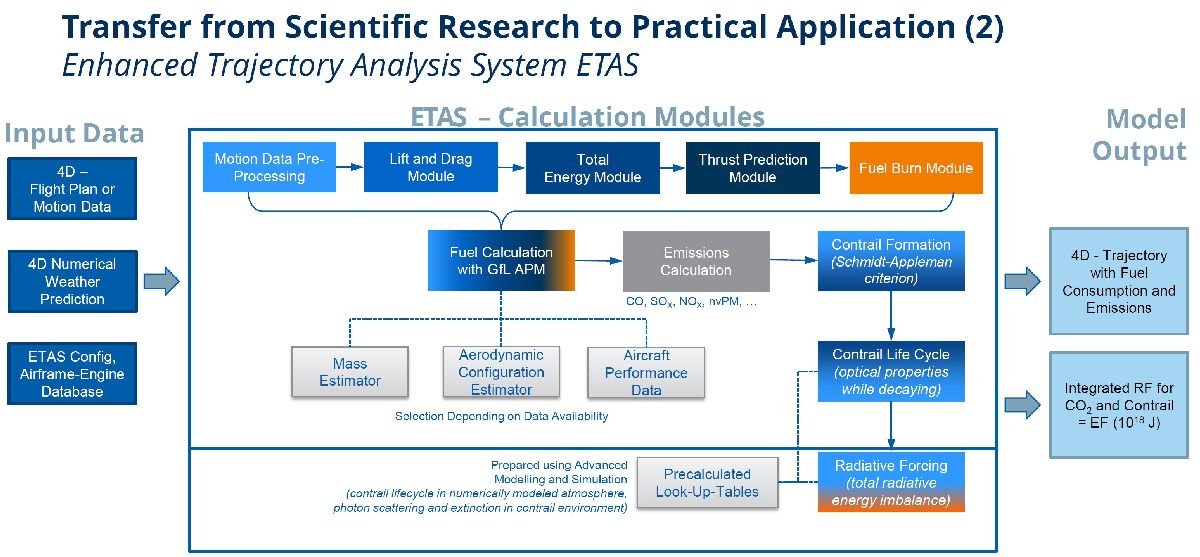ETAS 4.0 - Contrails now part of Single Flight Emission Assessment
July 2024 | Environment
The new version 4.0 of the Enhanced Trajectory Assessment System ETAS goes one step further in the emissions assessment on a per-flight-basis. While fuel consumption and thus CO2 were originally the main focus of the assessment, over time more emissions such as nitrogen oxides, particulate matter and carbon monoxide were added, which required iterative refinements to the engine and combustion model. In the latest stage, the formation of condensation trails (contrails) of single flights has now been included in the model. The formation occurs in ice super-saturated regions of the atmosphere, depending on exhaust gas temperature and is therefore particularly relevant to modern aircraft with good fuel and therefore CO2 efficiency. ETAS 4.0 subsequently also calculates the contrails’ decay and the influence on the global energy forcing, which varies greatly depending on the time of day, flight heading and overall optical density of the artificial clouds.GfL has presented the contrail assessment concept in late 2023 as part of the European Commission's ‘Workshop on Aviation non-CO2 Emissions’ and just recently at the "International Conference on Research in Air Transportation" ICRAT 2024 in Singapore. The concept paper and accompanying presentation titled "Integrated CO2 Emission and Contrail Formation Climate Effect Benchmarking" has been published on the conference home page.
The issue is also gaining momentum in politics. The scientific advisory board of the German Federal Ministry for Digital and Transport (BMDV) recently published a statement on the influence of contrails on the climate impact of aviation and, as part of a revision of the EU ETS system, airlines are to be obliged to monitor and report their non-CO2 emissions in accordance with the MRV concept from 2025.


